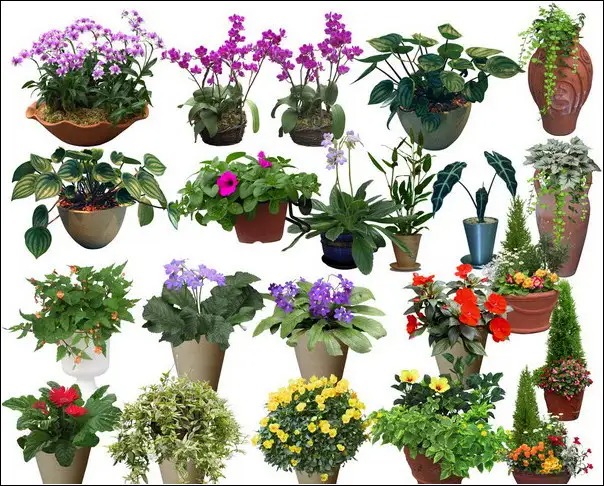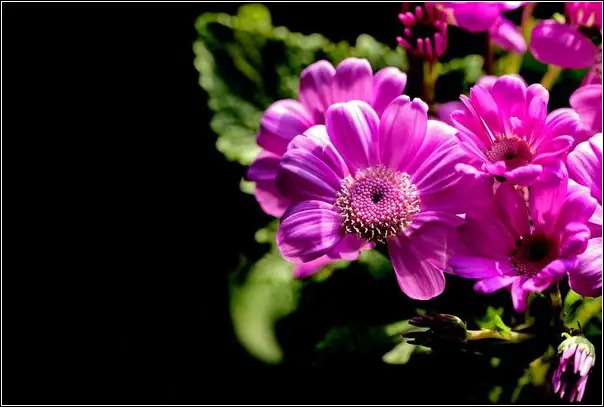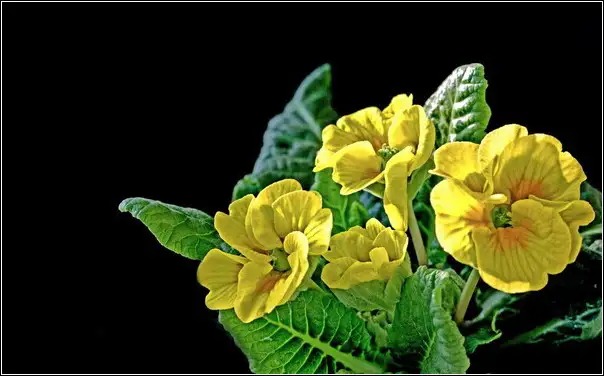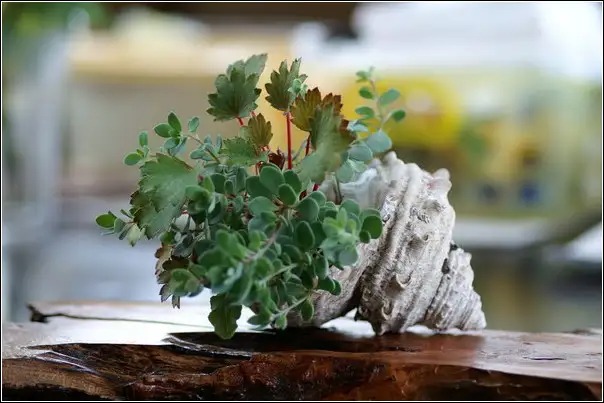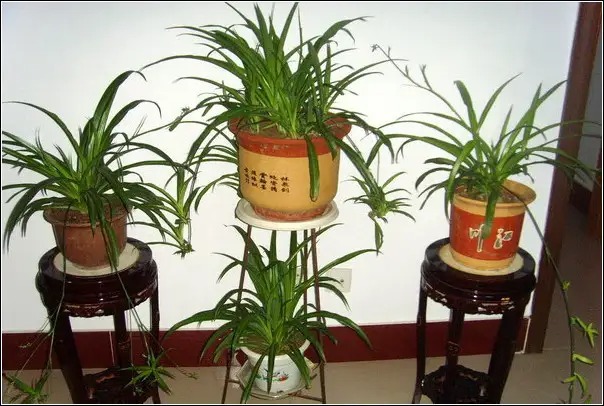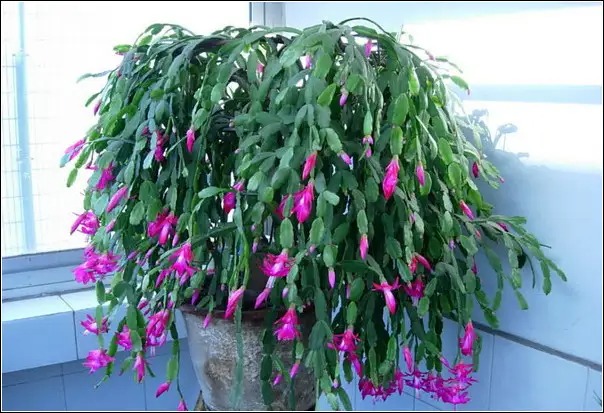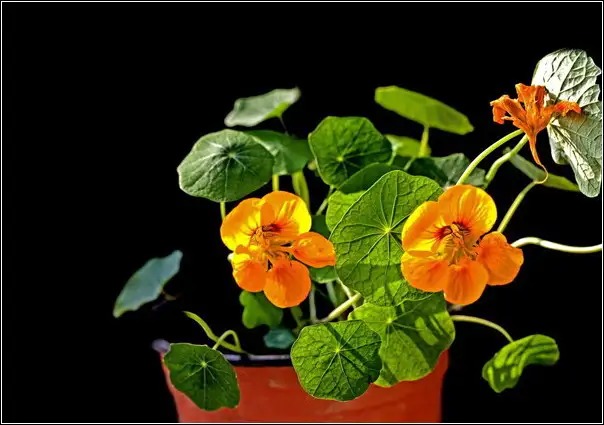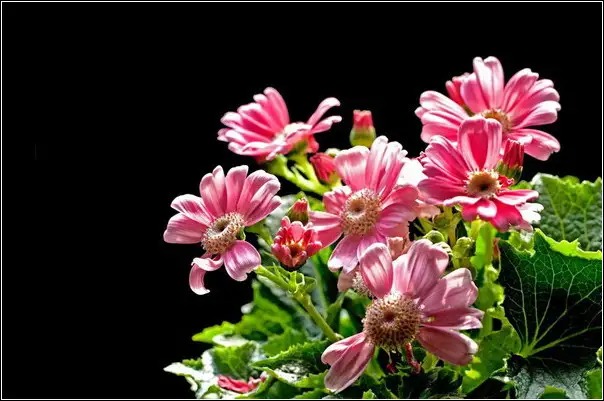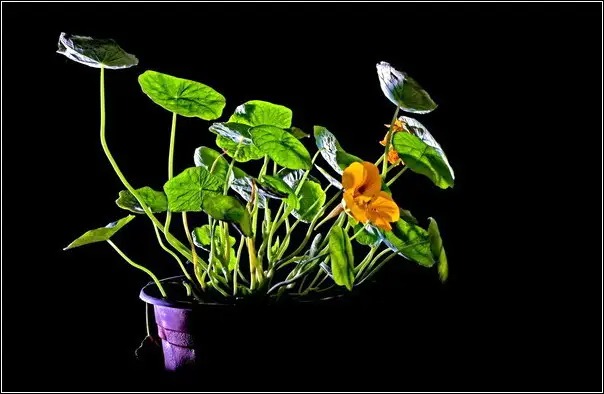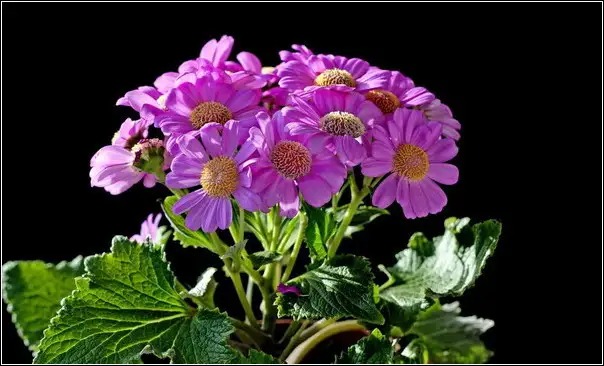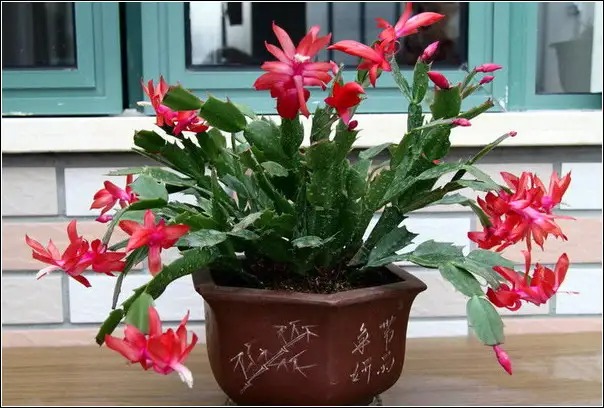1. The benefits of growing flowers
Flowers, with their gorgeous style, decorate the nature with extraordinary beauty and give people the enjoyment of beauty. Flower cultivation can enrich and adjust people's cultural life, add fun, cultivate temperament, and improve health; it can also increase scientific knowledge and improve cultural and artistic literacy. Flower cultivation can green and beautify the earth, protect and improve the environment, purify the air, and enable people to work and study in a beautiful environment, making life better. Flower cultivation is not only for viewing, but also has many important economic values. Flowers are an important part of Chinese herbal medicine. Honeysuckle, chrysanthemum, winter plum, hibiscus, azalea, rose, lotus, etc. are all common Chinese medicinal materials. Fragrant flowers are widely used in food, light industry, etc. For example, osmanthus can be used as food spices and wine, jasmine, white orchid, daidai, Zhulan, etc. can be smoked tea, chrysanthemum can be made into high-end food and dishes, white orchid, jasmine, rose, winter plum, daffodil, etc. can be used to extract essence.
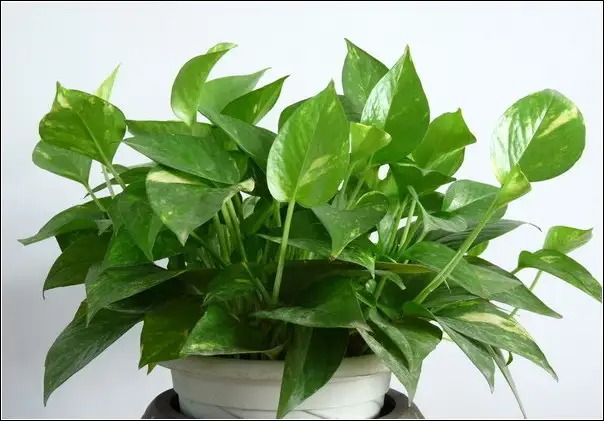
2. Three things to keep flowers indoors
1. It is advisable to raise flowers with strong ability to absorb toxins. Some flowers can absorb certain concentrations of toxic gases in the air, such as sulfur dioxide, nitrogen oxides, hydrogen fluoride, formaldehyde, hydrogen chloride, etc. According to research, wintersweet can absorb mercury vapor; pomegranate plants can absorb lead vapor in the air; snapdragons, cannas, morning glory, gladiolus, dianthus, etc. can convert highly toxic sulfur dioxide into non-toxic or low-toxic sulfate compounds through oxidation through their leaves; daffodils, mirabilis jalapa, chrysanthemums, saxifrage, etc. can convert nitrogen oxides into proteins in plant cells; spider plants, aloe vera, and tiger tail plants can absorb a large amount of indoor formaldehyde and other pollutants, eliminating and preventing indoor air pollution.
2. It is advisable to grow flowers that can secrete bactericides. The bactericides secreted by flowers such as jasmine, lilac, honeysuckle, and morning glory can kill certain bacteria in the air, inhibit the occurrence of diphtheria, tuberculosis, dysentery pathogens and typhoid bacteria, and keep the indoor air clean and hygienic.
3. It is advisable to grow flowers with "complementary" functions. Most flowers mainly carry out photosynthesis during the day, absorbing carbon dioxide and releasing oxygen. At night, they carry out respiration, absorbing oxygen and releasing carbon dioxide. Cacti are just the opposite, releasing carbon dioxide during the day and absorbing carbon dioxide and releasing oxygen at night. Growing flowers with "complementary" functions in the same room can not only benefit both, but also balance the content of oxygen and carbon dioxide in the room, keeping the indoor air fresh.
3. Three taboos for indoor flower cultivation
1. Avoid growing too many flowers that emit strong and irritating fragrances. For example, orchids, roses, Chinese roses, lilies, tuberoses, etc. can all emit strong fragrances. A pot of fragrant flowers in the room will be full of fragrance, but if there are too many fragrant flowers in the room, the fragrance will be too strong, which will cause people's nerves to become excited, especially if people stay in the bedroom for a long time, it will cause insomnia. The gas emitted by Christmas flowers and evergreens is not good for people; the particles emitted by tulips and hydrangeas will cause skin allergies and itching if they are exposed to them for too long.
2. Avoid placing too many flowers. Most flowers at night will release carbon dioxide and absorb oxygen to compete with people. At night, most rooms are closed and the air is not well circulated with the outside world. If too many flowers are placed indoors, the concentration of indoor oxygen will be reduced at night, affecting the quality of sleep at night, such as chest tightness, frequent nightmares, etc.
3. Avoid placing poisonous flowers indoors. For example, oleander, in spring, summer and autumn, its stems, leaves and even flowers are poisonous. The milky white juice it secretes contains oleandrin, which can cause poisoning if ingested by mistake. The bulbs of daffodils contain latin toxins, which can cause vomiting and other symptoms if ingested by children. The juice of leaves and flowers can cause redness and swelling of the skin, and can cause eye damage if the juice gets into the eyes by mistake. Excessive contact with mimosa can easily cause sparse eyebrows, yellowing of hair, and in severe cases, hair loss.
Therefore, when we grow and appreciate flowers, we must understand the relevant scientific knowledge to bring health and happiness to ourselves and our families.
4. Six precautions for growing flowers at home
Growing flowers at home is becoming more and more common, but many flower lovers do not know how to do it, and end up with flowers that look dull and lifeless. What is the problem?
First, avoid being careless. Flowers, like people, are living things and need careful care. Many flower growers lack the proper care and diligence in treating these beautiful lives. First, they are lazy and don't like to delve into flower-growing knowledge. They are willing to be laymen for a long time and do not manage them properly. Second, they are lazy and don't want to spend too much time and energy on flowers. After the flowers are brought into the house, they are left out in the cold, suffer from hunger and thirst for a long time, and suffer from diseases and insect pests. In this way, even the best flowers will gradually wither. So lazy people can't grow flowers well.
Second, beware of excessive love. Contrary to the above situation, some flower growers love flowers too much and feel itchy when they are not playing with them for a while. Some water and fertilize them without any rules, watering them whenever they remember, causing the flowers to die from overwatering and overfertilization; some move flower pots around casually, moving them to several places a day, forcing the flowers to frequently adapt to the environment, disrupting their normal growth patterns. If this continues, it would be strange if the flowers don't die. There are a few pots of flowers that you like at home, and it is understandable that you like them, but flowers, like people, have their own growth patterns. If you frequently disturb them when they need to rest, they will naturally feel tired and grow poorly.
Third, avoid chasing fame and fortune. Some flower lovers believe that they should raise famous flowers because they have high ornamental value and can make big profits in the market. Under this psychological control, they spare no expense to buy famous flowers and trees everywhere. As a result, the flowers often die soon after they are bought due to lack of good maintenance conditions and management techniques, which not only spoils the precious flowers but also wastes money. This is a conceptual misunderstanding. The correct approach should be to start with ordinary, lower-grade species and gradually explore the rules and techniques of flower cultivation. After reaching a certain technical level, gradually purchase more precious species, so that the chance of success is greater.
Fourth, avoid not distinguishing between weeds and damsels. Some flower growers are greedy and want to have everything. They will bring any variety home when they see it. This not only makes management difficult, but also brings some flowers that are not suitable for growing into the home, polluting the environment and damaging health. For example, flowers with poisonous juices can easily cause poisoning if people come into contact with them. The smell of some flowers has an impact on the human nervous system, which can easily cause breathing problems or even allergic reactions. Plants with sharp thorns on the surface also pose a certain threat to human safety, and so on. In short, it is not advisable to be greedy and want to have everything when growing flowers at home, and not distinguish between weeds and damsels. You should choose some species with smaller plants, beautiful appearance, and harmless to the human body.
The Five Precepts of Changing from One Direction to Another Some flower growers are impatient and have no theme for flower growing. They change the flowers in their home like a revolving lantern. This is a big taboo in flower growing. First, the species are changed too quickly and the growing time is short, which is not conducive to cultivating flowers and trees with beautiful plant shapes and high ornamental value. Second, they try every flower briefly, which is not conducive to improving the level of flower growing, and they will still be flower blind in the end. Therefore, flower growers can only gain something if they choose one or two kinds of flowers and focus on studying and cultivating them.
The concept of the six precepts is not new. There are endless new knowledge and new technologies in the flower industry today, but most flower growers still stick to traditional maintenance methods. They are not good at using new technologies and new equipment in terms of flower container use, water and fertilizer management, seedling cultivation, etc., such as soilless cultivation, odorless flower fertilizers and various flower containers. As a result, home flower cultivation is unhygienic, unsightly, unnovel, and has significant side effects.
5. The Art of Buying Flowers
Don’t buy the following types of flowers:
1. Flowers that have just been potted If you see new soil in the pot when you buy flowers, and the stems move when you pull them up, then the flowers must have been potted not long ago and have not grown new roots yet. Such flowers are easy to die after you buy them. The reason is that some business operators, in pursuit of economic benefits, directly mix organic fertilizers that have not yet been decomposed into the soil. Once these fertilizers ferment, the roots of the flowers will be burned. Sometimes, in order to save labor or rush time, they plant the flower roots without any preparation, and even hastily pot and sell flowers and trees that are too damaged to survive. If you accidentally buy such flowers, most of them will be difficult to survive.
2. Planting two or more flowers together Some business operators take advantage of the fact that buyers like lush flowers and leaves, and plant two or more undesirable flower seedlings together in a pot, selling inferior flowers to inexperienced buyers and making a profit. The branches and leaves of this kind of flowers will become thinner, weaker, and yellower day by day, and the flowers will become smaller and smaller. The reason is that the flowers are not nutritious, and there are too many roots in the pot, which is easy to harden. It may also rot and die due to poor drainage and poor ventilation. Of course, special combination pots are not included. Flowers without soil balls in summer or winter, in hot summer, the temperature is very high, the leaves of flowers and trees evaporate quickly, and the roots of newly potted flowers and trees are more or less damaged, making it difficult to absorb water from the potting soil in a short period of time. Only with the original soil ball can it safely pass through this transition period, otherwise it will wilt first and then slowly die. In winter, the weather is cold and flowers and trees grow slowly. Some flowers and trees even go dormant. If you buy flowers and trees without soil balls from the market and water them after potting, they may suffer frost damage (especially the root system), which may hinder the growth of the plants or even kill them. Even if they are not frozen, it is difficult for flowers and trees to grow new roots due to the low soil temperature, and the old roots cannot germinate for a long time and are very likely to rot and die. Particular attention should be paid to areas without heating in winter, such as the Yangtze River Basin.
3. Flowers with roots but no stems or leaves Some individual vendors go up the mountain in autumn and winter to dig up wild vines and roots of miscellaneous trees and sell them as flowers and trees. Because they have no stems or leaves, they are difficult to identify. In order to keep them moist, they wrap them with moss and give them some strange names to deceive inexperienced buyers. Some people are greedy for cheapness, but after buying them, most of the time they only have leaves but no flowers.
4. Flowers that can bloom in various colors in the picture. In order to make a profit, some unscrupulous vendors put artificial flowers of various colors on some plants that cannot bloom, and then take pictures to make pictures, and give some foreign flower names to deceive friends who are just starting to grow flowers. These flower vendors who set up stalls move to different places after making a profit, and it is difficult for deceived buyers to find them.
5. In order to sell at a good price, flower and tree operators intentionally tie all the branches and leaves of evergreen trees such as pine and cypress into various animal shapes with fine wire, and then sell them as bonsai at a high price in the market. This kind of potted flowers looks good at the time, but over time, as the plants grow, the shape will change. Moreover, tying all the branches and leaves of the plants at the same time not only affects photosynthesis, but also easily causes diseases and pests, which is very detrimental to the growth of the plants.
6. Cactus flowers with small frost spots on the stems or bulbs In early spring, you can often see individual vendors selling cactus flowers at low prices. Some buyers do not examine carefully and buy ten or eight plants at a time, and many of them have problems. The reason is that the cactus that has been through the winter is very easy to be slightly frostbitten. Light green frost spots smaller than rice grains appear on the stems and bulbs. There is nothing wrong on the surface, but in fact the internal tissues of the plant have been severely damaged. If you do not take measures after buying such flowers, the spots will become larger and larger, the plant will gradually become translucent, and finally the whole plant will die.
6. Spring maintenance of potted flowers at home
A year's plan begins in spring. The management and maintenance of home potted flowers in spring is very important, and the following three aspects of work should be done well.
1. Breed good seedlings. Rose, geranium, pomegranate, winter jasmine, etc. can be cut into strong branches for cuttings in spring. Azalea and jasmine prefer acidic soil. You can cut 5-10 cm thick new branches, remove the lower leaves, and keep 3-4 top leaves for cuttings. Cuttings can be made of black mountain mud, vermiculite or yellow sand as the medium. The cutting branches should be sprayed moderately to maintain a certain humidity. Generally, they can take root after about 1 month. Orchids, agaves, and spider plants can be propagated by division or creeping branches in early spring.
Spring-sown herbs sown with seeds, such as asparagus fern, colorful pepper, mimosa, impatiens, saffron, morning glory, and cosmos, can be broadcast or spot-sown. Sowing method: first fill the pot with soil, slightly compact it, then sow the seeds, and then cover with fine soil. Watering after sowing, generally put the flower pot in a basin of water, and let the water slowly seep in from the bottom of the pot. Most of them will germinate 1-3 weeks after sowing. After germination, move the pot to a sunny place. After the seedlings grow 2-3 leaves, they can be transplanted. Be careful not to damage the roots and break the stems when transplanting.
2. Repot and change the soil. This is a method of fertilizing potted flowers in spring. Generally, small pots are repotted once a year, large pots are repotted once every 3-4 years, and tall plants need to be repotted in larger pots. Some roots grow too densely or have dead roots or rotten roots, so they need to be properly pruned. After repotting, water thoroughly for the first time, and then place in a cool place. Water again when the pot soil is dry. Generally, wait until new roots grow before watering normally and move to a sunny place.
3. Pruning. This should be done according to different plants. Rhododendrons and winter jasmines should not be over-pruned. Pomegranates and roses can have their dead, injured or overgrown branches pruned off in early spring to promote luxuriant flowers and leaves. When repotting jasmine, old leaves should be removed to encourage more new branches to sprout. Climbing plants such as creepers, osmanthus, wisteria, and roses can be pruned to allow the leaves to be exposed to sunlight as much as possible and grow vigorously.
Be careful not to move potted flowers outdoors too early in early spring to avoid being damaged by cold air. Watering can be increased as the temperature rises, and the dryness and wetness should be evenly mixed.
7. Summer maintenance of potted flowers at home
1. Watering: Flowers grow lushly in summer and consume a lot of water, so you should water them sufficiently every morning and evening in summer.
2. Build a frame to provide shade. For all potted flowers, you need to build a frame and put up reed curtains to provide shade in summer to help them safely through the hot summer.
3. Pay attention to ventilation of indoor flowers. When the temperature exceeds 30°C, pay attention to ventilation, open the windows, let fresh air flow into the room, and prevent heatstroke and cool down.
4. Moisture retention and cooling In summer, you can cover the potting soil with some grass to prevent the sun from directly shining on the potting soil, thereby reducing the temperature of the potting soil and preventing the moisture in the potting soil from evaporating too quickly; you can also use a sprayer to wet the leaves of the flowers and sprinkle moisture around them to reduce the temperature and increase the humidity. This is very beneficial for some flowers that like cool weather.
8. Autumn maintenance of household potted flowers
1. Strengthen water and fertilizer management After the beginning of autumn, the weather gradually turns cooler. For some foliage flowers, such as asparagus, spider plant, cycad, etc., thin liquid fertilizer is generally applied every half a month to keep the leaves green and improve the ability to resist cold; for chrysanthemums, camellias, azaleas, etc. that bloom once a year, liquid fertilizer mainly composed of phosphorus fertilizer should be applied in time to ensure sufficient nutrients so that they bloom more and larger; for roses, Milan, jasmine, etc. that bloom multiple times a year, sufficient fertilizer and water should be supplied to keep them blooming; for some fruit-viewing flowers, such as kumquats, bergamots, pomegranates, etc., thin liquid fertilizer mainly composed of phosphorus fertilizer should be applied 1-2 times. As the temperature gradually decreases, except for the autumn-sown grass flowers that bloom in autumn and winter or early spring, the number of watering should be reduced for other flowers, and the pot soil should not be dried before watering, so as to avoid excessive water and fertilizer, resulting in excessive growth of branches and leaves, affecting the differentiation of flower buds and freezing damage.
2. Timely sowing and cutting in autumn. In autumn, mature flower and tree seeds should be harvested in time, and tulips, gloxinia, snapdragons, etc. should be sown in time. In particular, seeds that are easy to lose germination power should be sown in time in autumn, combined with pruning and cuttings of flowers and trees. For example, cuttings of roses, roses, and roses have a higher survival rate.
9. Winter maintenance of potted flowers at home
Different types of flowers have different growth habits, and different management measures should be taken to ensure their safe wintering.
1. Overwintering of deciduous woody flowers: Most deciduous woody flowers are native to temperate regions, and the most common ones are pomegranates, honeysuckle, roses, peach blossoms, and winter jasmine. They are generally dormant in winter, so the room temperature can be controlled at around 5°C. If there is a balcony or a small courtyard, you can place the cold-resistant potted roses, peach blossoms, pomegranates, honeysuckle, etc. at the back of the balcony or in the corner of the courtyard, wrap them with plastic film and cover them well, and they can safely overwinter.
2. Wintering of evergreen woody flowers: such as oleander, kumquat, osmanthus, etc., are in a semi-dormant state. The temperature is generally controlled above 0℃, and they can safely survive the severe winter. Milan, jasmine, hibiscus, gardenia, etc. should be placed in a place with sufficient sunlight. The indoor temperature should be kept at around 15℃. If the temperature is too low, the flowers will die.
3. Wintering of annual and biennial herbaceous flowers: such as Primula, Coleus, and Calceolaria, they can grow normally if the room temperature is kept between 5℃ and 15℃. For perennial herbaceous flowers such as Asparagus fern, Impatiens, Geranium, and Begonia, they can grow well if they are kept in sufficient sunlight and the room temperature is between 10℃ and 20℃. For herbaceous flowers that are dormant in winter, such as Clivia and Oncidium, they can be kept at a room temperature of about 5℃ and given appropriate light, with no more than 8-10 hours of light per day. At the same time, fertilizer and water management should be strengthened, and they will bloom in two months.
10. Several tips for growing flowers
1. How to judge whether potted flowers are lacking water
(1) Knocking method: Use your finger joints to gently knock on the middle part of the pot wall. If a crisp sound is heard, it means the soil is dry and needs to be watered immediately. If a dull sound is heard, it means the soil is wet and you do not need to water it for the time being.
(2) Visual inspection: Use your eyes to observe whether the color of the potting soil surface changes. If the color becomes lighter or light grayish white, it means that the potting soil is dry and needs to be watered. If the color becomes darker or dark brown, it means that the potting soil is moist and you do not need to water it for the time being.
(3) Finger test method: Gently insert your finger into the soil about 2 cm deep and touch the soil. If it feels dry or rough and hard, it means the soil is dry and needs to be watered immediately. If it feels slightly damp, fine and soft, it means the soil is moist and no watering is needed.
(4) Pinching and twisting method: Twist the soil with your fingers. If the soil becomes powdery, it means that the soil is dry and water should be applied immediately. If the soil becomes flakes or granules, it means that the soil is moist and water can be temporarily withheld. The above methods are all based on experience and can only tell people the general situation of the soil being dry or wet. If you need to know the exact degree of the soil being dry or wet, you can buy a soil moisture meter and insert the moisture meter into the soil. You can see the words "dry" or "moist" on the scale, and you can know exactly when to water.
2. What are the requirements for watering flowers?
The best water for watering flowers is neutral or slightly acidic river water, pond water, or rainwater. Rainwater is the best for watering flowers because it contains more natural minerals. The second best is river water and pond water. A flower proverb says: "River water is fertile and pond water is strong, so flowers flourish and bloom fragrantly." In particular, green pond water has more nutrients and is the ideal water for watering flowers. In cities, tap water is often used for watering flowers. However, tap water contains a high content of bleach and chemicals, so it should be stored for one or two days before being used for watering flowers. In addition, if you put a few vitamin C tablets in tap water, you can eliminate the chlorine in the water. Generally, add one tablet to a basin of water and leave it for half a day before watering the flowers.
Flower proverbs say: "Southern flowers migrate north, add alum when watering them"; "Northern flowers are best watered with fish tank water"; "Fish water makes rice water strong, and is most suitable for watering potted flowers". Whether in winter or summer, do not use cold water to water flowers. When the temperature is below 10℃, add some hot water to the water to try to make the water temperature close to the soil temperature, creating a microclimate suitable for flower growth.
3. Homemade Fertilizer
In daily life, there are many waste materials that can be used to make homemade fertilizers.
(1) Soaking liquid fertilizer: Put waste vegetable leaves, melon and fruit peels, chicken and fish offal, fish scales, waste bones, eggshells and moldy food (peanuts, melon seeds, beans, bean powder) in a small jar (or pot), add water and sprinkle a little trichlorfon, cover tightly, and use it after high-temperature fermentation and decomposition. When using, take the supernatant and dilute it with water before trial use. You can also mix the above waste with some old culture soil, add some water, put it in a large plastic bag, tie it tightly and leave it for a while, and use it after fermentation.
(2) Waste composting: Choose a suitable place to dig a pit with a depth of 60-80 cm, and pad it with 10 cm of furnace ash. Put rotten vegetable leaves, livestock viscera, fish scales, chicken and duck feces, egg shells, meat waste and broken bones into the pit, sprinkle some pesticides, and cover it with a layer of garden soil about 10 cm thick. Keep the humidity in the pit to promote the decomposition of fertilizer. It is best to compost in autumn and winter. When it is heated up in spring and decomposes without odor, it can be mixed into the culture soil as base fertilizer; it can also be sieved with a 4 mm sieve while it is wet and rubbed into pellets. The fine ones can be used as topdressing fertilizer, and the coarse ones can be used as base fertilizer. Some orange peels or rice vinegar dilution can be added during the fermentation to reduce the odor.
4. How to fertilize flowers at home
(1) Timely fertilization means applying fertilizer when the flowers need it. The best time to apply fertilizer is when the leaves and flowers become lighter or yellower and the plants grow thin and weak. In addition, topdressing should be applied when the seedlings are leafing out and the branches are spreading leaves to meet the fertilizer needs of the rapid growth of the seedlings. Flowers have different fertilizer needs at different growth stages. The type and amount of fertilizer applied also vary. For example, applying more nitrogen fertilizer in the seedling stage can promote seedling growth, and applying phosphorus fertilizer in the bud stage can promote large and bright flowers and a long flowering period.
(2) Fertilize potted flowers appropriately. Fertilize potted flowers in accordance with the principle of "eat less but more often", that is, fertilize more often but with less fertilizer each time. Generally, apply thin fertilizer water every 7-10 days, and once every 15-20 days after the "beginning of autumn". As flowers and trees grow, the concentration of fertilizer should be gradually increased. For example, the concentration of urea should be gradually increased from 0.2% in the early stage to 1.0%; the concentration of phosphorus and potassium fertilizers should be increased from 1.0% to 3.0-4.0%.
(3) Apply fertilizer according to the season. Flowers grow fast and vigorously in spring and summer, so more fertilizer can be applied. After autumn, the temperature gradually drops and the growth of flowers weakens, so less fertilizer should be applied. Fertilization should be stopped from late August to early September to prevent a second growth peak, otherwise the flower tissue cells will be tender and it will be difficult to overwinter. For overwintering flowers, fertilization should be stopped in winter when they are dormant.
(4) Fertilization should be controlled at the temperature. It is not suitable to fertilize potted flowers around noon when the temperature is high or on rainy days, as fertilization at this time can easily damage the roots. It is best to fertilize in the evening. In autumn and winter, when the temperature is low and the flowers grow slowly, no fertilizer is generally applied. In summer, when the temperature is high and the flowers grow vigorously, more fertilizer should be applied. When the temperature is high, the concentration of topdressing should be low and the amount should be small. Topdressing with thin fertilizer water should be applied more times.
(5) Mixing pesticides and fertilizers: If pests and diseases occur during fertilization, an appropriate amount of pesticides can be added to the fertilizer solution, which can achieve the dual purpose of fertilizing and preventing pests and diseases.
11. Notes
1. Why do flowers die when grown at home?
(1) Too much fertilizer. Some people love their flowers so much that, considering that potted flowers consume a lot of nutrients during the flowering period, they apply a large amount of chemical fertilizers, resulting in excessive concentration. At the very least, this will affect the root hairs' absorption of water, and at worst, it will cause the death of the plant.
(2) Too much uncomposted organic fertilizer is applied. When organic fertilizer is decomposed in the soil, a large number of microorganisms are active, causing the soil to be deprived of oxygen and the roots to suffocate. On the other hand, the fermentation of organic fertilizer produces alcohol, lactic acid and other substances that are toxic to the root system. At the same time, fermentation releases a large amount of heat, which raises the temperature and causes the "root burn" phenomenon.
(3) Without a place to grow flowers, people often place potted flowers in a closed balcony facing east or west. The radiant heat from the sun causes the temperature inside the balcony to rise sharply, creating a hot and dry environment. The high temperature and dryness, as well as the lack of ventilation, make it easy for red spider mites to harm the flowers, which accelerates the death of the flowers.
(4) Overwintering flowers are suddenly taken indoors. Flowers that overwinter indoors grow semi-shade leaves or shade leaves. If they are suddenly taken indoors in early spring, the shade leaves cannot adapt and the tender leaves and buds are easily burned by the sun. In addition, the temperature difference between indoor and outdoor is large, which can easily cause fatal damage to the flowers.
(5) Lack of sunlight. Some people place flowers on tables indoors for easy viewing, away from sunlight, which inhibits their photosynthesis. The organic nutrients in the flowers can only be consumed but not replenished in time, which reduces the resistance of flowers, weakens the plants and causes them to die. Watering too much and too frequently is also a cause of plant death.
2. Harmful flowers and trees
(1) Flowers that should not be placed indoors for a long time: If a large number of pine and cypress plants are placed indoors, they will emit a strong smell of rosin oil, which will affect people's appetite and make pregnant women feel nauseous; geraniums will cause allergic reactions in some people; tulips contain toxic alkali, and if they are left for too long, they will make people dizzy and their hair will fall out; when night-blooming jasmine stops photosynthesis at night, it will emit a large amount of waste gas, which will make people with high blood pressure and heart disease feel depressed; if lilac is placed indoors for a long time, the odor it emits will cause some people to have asthma and depression; the smell emitted by elderberry will also make people feel nauseous and dizzy. Therefore, the above flowers should not be placed indoors for too long.
(2) Toxic flowers: Yellow azalea, the plant and flowers contain toxins, if eaten by mistake, it will cause poisoning. Poinsettia, the whole plant is poisonous, the white juice can irritate the skin and cause redness and swelling, and if the stems and leaves are eaten by mistake, there is a risk of poisoning and death. Oleander: The branches, leaves and bark all contain toxins, and if a few grams of dry matter are eaten by mistake, it can cause poisoning. The succulent plant of the hollyhock tree, the white juice that flows out after the stem is broken can cause redness and swelling of the skin, and can cause blindness if it gets into the eyes by mistake. Five-color plum: The flowers and leaves are poisonous, and if eaten by mistake, it will cause diarrhea and fever. Narcissus: The bulbs contain lacotine, which can cause enteritis and vomiting if eaten by mistake, and the flowers and leaves can cause redness and swelling of the skin. Lycoris: The bulbs contain lycorine and other toxic substances, which can cause redness, swelling and itching when human skin comes into contact with lycorine. Lycoris radiata: The bulbs contain lycorine and other toxic substances, which can cause redness, swelling and itching when human skin comes into contact with lycorine. Lycoris radiata can cause nosebleeds if inhaled into the respiratory tract. Ingestion by mistake can cause vomiting, diarrhea, cold hands and feet, shock, and in severe cases, death due to central nervous system paralysis. Mimosa: contains mimosine in its body. Excessive contact can cause hair loss and sparse eyebrows. Euphorbia pilosa and Typhonium: the white latex in the stems is poisonous and should not be put into the eyes. Dieffenbachia: the flowers and leaves contain oxalic acid and asparagine. If eaten by mistake, it can cause swelling and pain in the mouth, throat, esophagus, and stomach, and even damage the vocal cords, making people mute. Cactus plants contain poisonous juice in their thorns. After being stung by the human body, it is easy to cause allergic symptoms such as skin redness, swelling, pain, and itching. Coral bean: the whole plant is poisonous. Children should be educated not to eat its red fruits.
3. How to deal with the rotting of cactus plants
The stems and leaves of potted cacti turn from green to gray, the edges turn yellow, the base becomes soft, and the rhizomes rot. The general reason is that the cacti are placed in a dark, damp, and poorly ventilated place after excessive watering or after a rainy season, which causes the pot soil to be saturated with water and severe hypoxia, resulting in the normal activities of aerobic microorganisms such as aminizing bacteria, nitrifying bacteria, and sulfiding bacteria in the soil that have the function of decomposing organic matter being blocked, and the organic matter in the soil cannot be effectively decomposed, so that the cactus plants cannot obtain various mineral nutrients in the soil and show symptoms such as chlorosis and limpness. People who have no experience in cultivation often mistakenly believe that it is caused by lack of water in the plants, so they keep watering, which causes root rot, stem rot, and even death. When the soil is too wet and too acidic, effective measures must be taken to save it after the above situation occurs. Especially when the weather suddenly turns sunny after a long rain, cactus plants should not be exposed to the sun immediately. They should be placed in a cool and ventilated place for 1-2 days before being exposed to the sun to allow them to recover slowly. If exposed to the sun rashly, the stems and leaves will still wilt even if the soil in the pot is moist due to the poor water absorption capacity of the plant roots.
If the roots or stems are rotten, you should repot and change the soil, cut off the rotten roots, disinfect with slaked lime (such as old wall lime) powder, and repot after drying. If the roots are good and only a small amount of stems are rotten, you can take surgical measures to cut off all the rotten parts with a sterilized sharp knife, and then apply slaked lime to make the incision dry quickly, so that the stems will no longer rot.
While implementing technical treatment, you can dig out a part of the pot soil and put it on a ventilated windowsill or balcony to ventilate it as much as possible. Since the pot soil is ventilated and dry, the normal growth of cactus plants can be restored as soon as possible.
